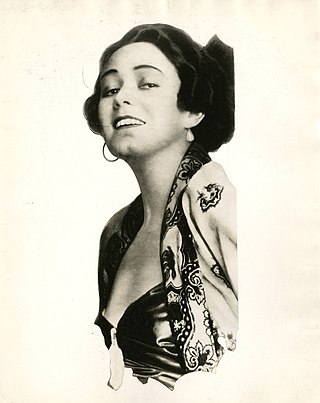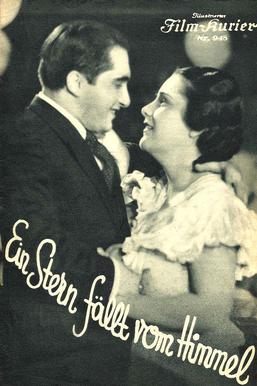
Carmen Cartellieri, also known as Carmen Teschen, was an Austrian actress and producer.
Eugen Neufeld was an Austrian-Jewish film actor. He was the older brother of actor and director Max Neufeld.

Karl Ehmann was an Austrian stage and film actor whose career spanned both the silent and sound eras of the film industry.
General Babka is a 1930 Austrian film directed by Dezső Kertész and starring Wolf Albach-Retty, Angelo Ferrari, and Mary Kid.

A Star Fell from Heaven is a 1934 Austrian musical film directed by Max Neufeld and starring Joseph Schmidt, Egon von Jordan and Herbert Hübner. It was shot at the Sievering Studios in Vienna. Two years later it was remade in Britain with Schmidt reprising his role. A later German-language film A Star Fell from Heaven released in 1961, was unconnected to the earlier productions.
Gulliver's Travels is a 1924 Austrian silent adventure film directed by Géza von Cziffra and starring Eugen Neufeld, Liesl Stillmark and Gyula Szöreghy. It is based on the 1726 novel Gulliver's Travels by the Anglo-Irish writer Jonathan Swift.

The Family without Morals is a 1927 Austrian silent film directed by Max Neufeld and starring Anna Kallina, Colette Brettel, and Carmen Cartellieri.
Don Cesar, Count of Irun is a 1918 Austrian silent historical film directed by Jacob Fleck and Luise Fleck and starring Max Neufeld, Grit Haid and Karl Ehmann. It is based on the opera Don César de Bazan by Philippe Dumanoir and Adolphe d'Ennery, based on an earlier work by Victor Hugo. It was made and released during the closing stages of the First World War.
The Dancing Death is a 1920 Austrian silent film directed by Jacob Fleck and Luise Fleck and starring Karl Ehmann, Liane Haid and Max Neufeld.
The Ancestress is a 1919 Austrian silent drama film directed by Jacob Fleck and Luise Fleck and starring Liane Haid, Max Neufeld and Karl Ehmann. The same story had previously been shot in 1910.
Eva, The Sin is a 1920 Austrian silent drama film directed by Jacob Fleck and Luise Fleck and starring Liane Haid, Max Neufeld and Karl Ehmann.
Let the Little Ones Come to Me is a 1920 Austrian silent film directed by Max Neufeld and starring Neufeld. Liane Haid and Karl Ehmann.
The Master of Life is a 1920 Austrian silent drama film directed by Jacob Fleck and Luise Fleck and starring Karl Ehmann, Liane Haid and Max Neufeld.
Light of His Life is a 1921 Austrian silent film directed by Max Neufeld and starring Liane Haid, Eugen Neufeld and Karl Ehmann.
The Separating Bridge is a 1922 Austrian silent film directed by Julius Herska and starring Maria Mindzenty, Nora Gregor and Eugen Jensen.
The House of Molitor is a 1922 Austrian silent film directed by Hans Karl Breslauer and starring Alfred Abel, Anny Miletty and Magda Unger.
The Tales of Hoffmann is a 1923 Austrian silent film directed by and starring Max Neufeld. The film also features Karl Ehmann, Eugen Neufeld and Robert Valberg.
The Iron King is a 1923 Austrian silent film directed by Max Neufeld and starring Siegmund Breitbart, Eugen Neufeld and Georg Kundert.

The Midnight Waltz is a 1929 Austrian silent film directed by Heinz Paul and starring Elisabeth Pinajeff, André Mattoni and Gritta Ley. The film's sets were designed by the art director Hans Ledersteger. The plot was based on the 1926 operetta of the same title by Robert Stolz.




